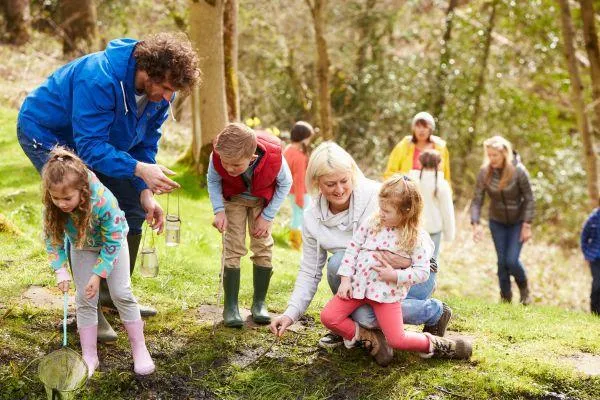
Empowering Children as Co-Researchers: Turning Place-Connected Learning into Action
What Happens When Educators and Children Become Your Research Partners?
Children are naturally curious explorers, constantly asking questions and testing ideas about everything from how ants navigate the footpath to why some equipment in the playground stays cool while the slide gets hot. In place-connected sustainability learning, children and educators collaborate as co-researchers, investigating their environment—natural, built, and cultural—and discovering solutions together.
By involving children as co-researchers, educators not only amplify children's voices but also create learning experiences that are authentic, meaningful, and grounded in the real world. This approach ensures that sustainability becomes more than a concept — it becomes a lived experience that connects children to their specific place and community.
What It Means to Be a Co-Researcher
Being a co-researcher isn't about educators or children having all the answers — it's about posing questions, making observations, experimenting, and reflecting together. In place-connected learning, this includes exploring both environmental and cultural dimensions:
Environmental Co-Research Examples:
Documenting which areas of the outdoor space attract different insects, birds, or plants
Investigating how rainwater moves through both natural and built features (gardens, gutters, drains)
Observing how different materials in the built environment respond to weather changes
Cultural and Community Co-Research Examples:
Learning from family members about their connections to local places, traditions, or knowledge
Exploring with Traditional Owners or local elders how Country has been cared for over time
Investigating how the local community has changed and what stories different neighbours hold
Discovering what local businesses, services, or community groups contribute to caring for your place
Through these experiences, children develop critical thinking, problem-solving skills, and a sense of agency, while educators gain insights into what sparks curiosity and engagement across all aspects of their service's unique place.
Following Children's Natural Curiosity
Effective co-research is guided by children's interests and questions, whether they're fascinated by:
Natural phenomena: Why do some plants grow better in certain spots? Where do the local birds go at night? Do plants need the moon and the sun?
Built environment: How does water get to our taps? Why are some buildings taller than others?
Community connections: Who takes care of the local park? What languages do people speak in our community?
Cultural stories: What games did our families play when they were children? How do different families celebrate seasons?
💡 Micro-action: Pick one feature of your indoor space, outdoor area, or local community and involve children in exploring it. Ask open-ended questions: "What do you notice here?" "What do you wonder about this?" or "How could we find out more?"
Building Cultural Connections Through Co-Research
Place-connected co-research creates natural opportunities to honour and learn from the diverse cultural knowledge in your community:
Indigenous Perspectives: Invite local Aboriginal educators to share knowledge about Country and how it's been cared for
Family expertise: Ask families about their cultural traditions, knowledge, or connections to place
Community partnerships: Connect with local groups, businesses, or organisations that hold place-based knowledge
Intergenerational learning: Facilitate opportunities for elders or community members to share their stories and skills
From Observation to Projects
Co-research is the bridge between reflection and action. Once children and educators have explored their environment together, including its natural, built, and cultural dimensions, their insights can form the foundation for meaningful sustainability projects that connect to all five Foundation Questions from the Place Connection Guide.
For structured guidance on facilitating inclusive co-research and identifying actionable steps, the Place Connection Guide includes reflective prompts and practical steps for educators to turn observations into projects that children genuinely care about.
📥 Download the Place Connection Guide
Explore More in the Series
If you're curious about turning observations into real-world projects, read From Reflection to Action: Creating Place-Based Sustainability Projects next
For foundational context on why place-connected learning is so important, check out Discovering Place-Connected Learning
Building Tomorrow's Place-Connected Citizens
Empowering children as co-researchers transforms sustainability learning from abstract concepts into hands-on, culturally responsive, and meaningful experiences. By observing, questioning, and experimenting together across natural, built, and cultural dimensions of place, educators and children become partners in discovering solutions that connect learning to their unique environment and community.
Next Step: Download the Place Connection Guide to start co-researching with your team and create actionable sustainability projects that honour your place's full story.
📥 Download the Place Connection Guide
